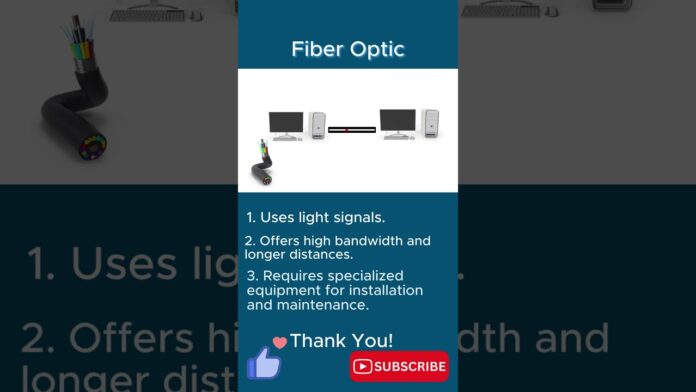In the ever-evolving landscape of network infrastructure, fiber optic media stands as a beacon of innovation and reliability, ushering in a new era of high-speed, high-bandwidth communication. From its inception to its widespread adoption in modern networks, fiber optic media has revolutionized connectivity, offering unparalleled performance and efficiency. In this article, we delve into the world of fiber optic media, exploring its technology, benefits, and transformative impact on network architecture.
Understanding Fiber Optic Media:
Fiber optic media is a transmission medium that utilizes optical fibers to transmit data in the form of light pulses. These optical fibers, typically made of glass or plastic, are designed to guide light through internal reflections, allowing for the rapid and efficient transmission of data over long distances. Fiber optic media operates on the principle of total internal reflection, wherein light signals are bounced off the inner walls of the fiber, minimizing signal loss and maintaining signal integrity.
Advantages of Fiber Optic Media:
- High Bandwidth: Fiber optic media offers significantly higher bandwidth compared to traditional copper-based media, enabling the transmission of large volumes of data at incredible speeds. This high bandwidth makes fiber optic media ideal for bandwidth-intensive applications such as high-definition video streaming, cloud computing, and data center networking.
- Low Latency: Fiber optic media boasts minimal signal degradation and low latency, ensuring fast and reliable data transmission. This low latency is crucial for real-time applications such as online gaming, video conferencing, and financial trading, where even slight delays can have significant consequences.
- Long-Distance Transmission: Unlike copper-based media, fiber optic media can transmit data over long distances without signal degradation or loss of quality. This long-distance transmission capability makes fiber optic media suitable for telecommunications networks, internet backbone infrastructure, and submarine cable systems.
- Immunity to Electromagnetic Interference (EMI): Fiber optic media is immune to electromagnetic interference, making it resistant to external factors such as electrical noise, radio frequency interference, and electromagnetic radiation. This immunity ensures reliable data transmission even in challenging environments prone to interference.
Applications of Fiber Optic Media:
- Telecommunications: Fiber optic media forms the backbone of telecommunications networks, enabling high-speed data transmission for voice, video, and internet services. It serves as the primary infrastructure for long-distance communication, connecting cities, countries, and continents with high-capacity optical links.
- Data Centers: Fiber optic media is extensively used in data center networking to interconnect servers, storage systems, and networking equipment. Its high bandwidth and low latency are essential for supporting the massive volumes of data traffic generated by modern cloud computing and big data applications.
- High-Speed Internet: Fiber optic media plays a crucial role in delivering high-speed internet access to residential and commercial users. Fiber-to-the-home (FTTH) and fiber-to-the-premises (FTTP) deployments provide ultra-fast broadband connections, enabling seamless streaming, online gaming, and digital content consumption.
Fiber optic media represents the pinnacle of network connectivity, offering unmatched speed, reliability, and performance. Its adoption has transformed the way we communicate, collaborate, and conduct business, powering the digital infrastructure of the 21st century. As we continue to push the boundaries of technology and connectivity, fiber optic media will remain at the forefront of innovation, driving the evolution of network architecture and shaping the future of interconnected societies.
